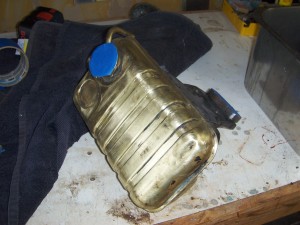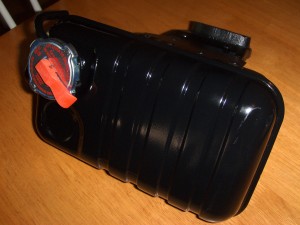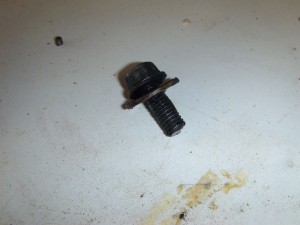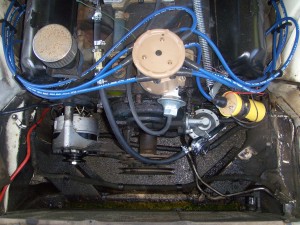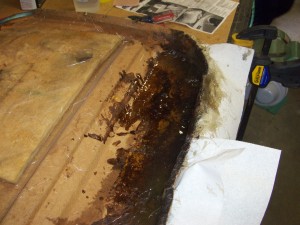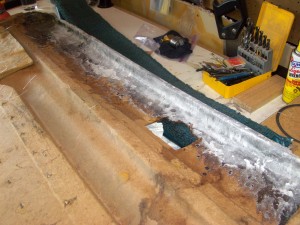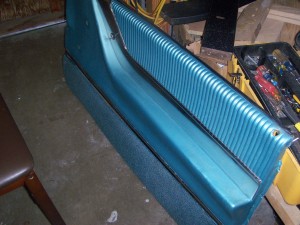In every car project, there comes a time when you stop unscrewing bolts and start screwing them in. I usually notice when I switch the direction on my socket wrench, and it’s a little exciting if the car’s been apart for some time.
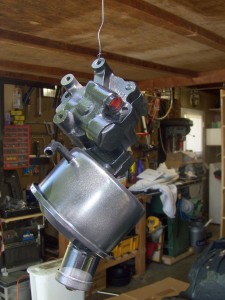
Had that moment earlier this week when took a fitting off the old water pump and screwed it on to the new one. Since then, I’ve got the power steering pump partially reassembled, (Yeah, not entirely sure where that last extra piece is supposed to fit.)
I used some heavy duty carb cleaner to swab down the front of the engine, followed up with some water-based degreaser (that works better than you would think–and doesn’t carry warnings about contaminating the world). The engine and bay are not as clean as they could be, of course, but clean enough for me to see where oil might be leaking–in case I want to do anything about it. (Right now I’m thinking not.)
I painted up the power steering pump and there are a number of parts that could use the same treatment. It’s a lot of work, though, and the newly painted parts don’t look that great after a few weeks of daily driving.
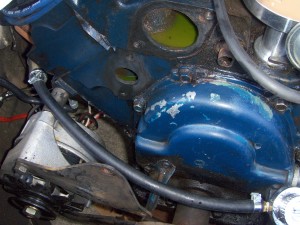
The last piece I’m going to paint is the fan shroud, which is right out front, very visible. I took a wire wheel to it yesterday and started stripping it down. There were layers of paint, then the original rusty metal down there at the bottom. I looked down while I was working and realized I was still in slippers, so maybe that job isn’t as hard as I imagine.
I had planned to get the water pump back on the car this afternoon, but it looks like I’ve got 10 feet of the wrong size water hoses. Tomorrow, then.

